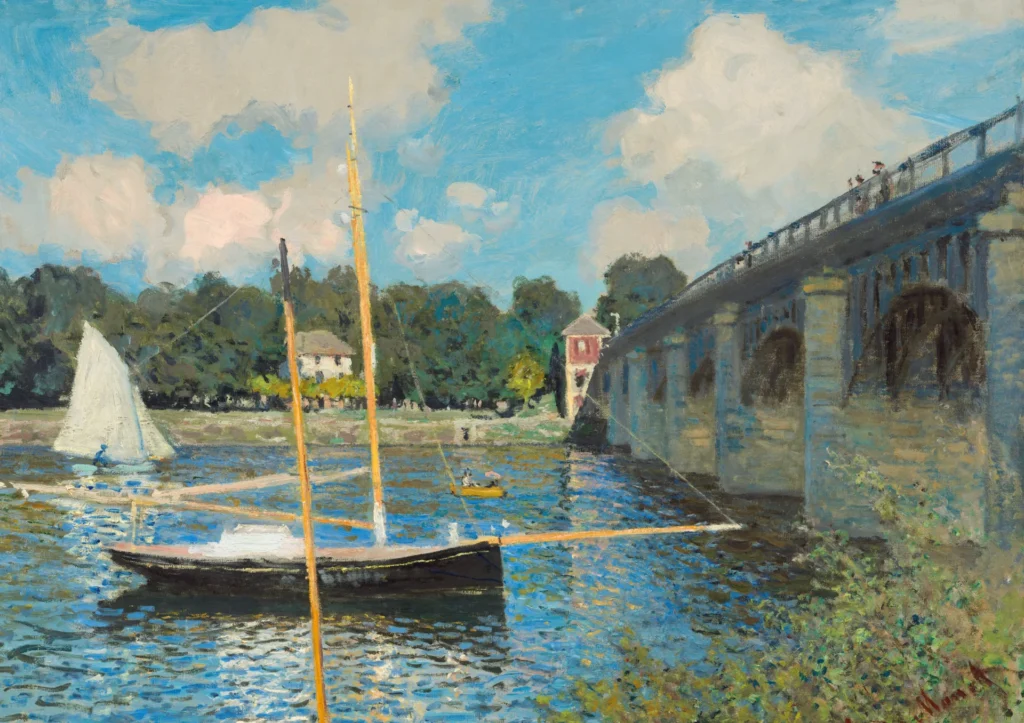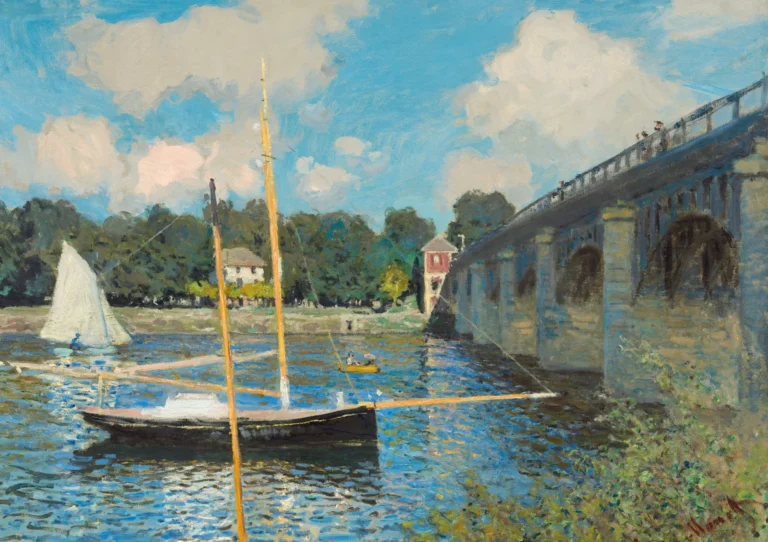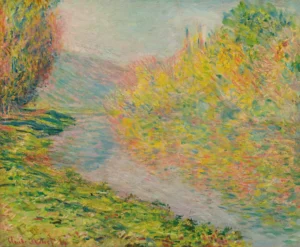The Bridge at Argenteuil (1874)
Painted in 1874, The Bridge at Argenteuil by Claude Monet is a stunning depiction of a serene moment on the Seine River, showcasing the iconic stone bridge of Argenteuil. The work exemplifies the Impressionist technique, characterized by discrete brushstrokes and vibrant colors that convey light and atmosphere. The painting not only reflects the artist's innovative style but also captures the essence of leisurely summer days that attracted Parisians to the riverside, marking a pivotal moment in Monet's career and the movement as a whole.
Year 1874
About the Artwork
The Bridge at Argenteuil encapsulates a time of serene beauty along the Seine River, a location Monet became enamored with during his time living in Argenteuil from 1871 to 1877. This was a crucial period in which the Impressionist movement coalesced, bringing together painters eager to break away from traditional styles. While capturing everyday scenes, Monet employed his signature technique of discrete brushstrokes, allowing viewers to experience the tranquil interplay of light and color. His multiple depictions of the same bridge during this period laid the groundwork for his later series, reflecting his obsession with observing nature's ever-changing qualities.
Did You Know
The Bridge at Argenteuil was showcased in the first-ever Impressionist exhibition held in 1874, marking a pivotal moment in art history and helping to establish the movement.
Monet’s fascination with the Argenteuil Bridge led him to paint it multiple times during this period, reflecting his exploration of light and color across different times of day and seasons.
The painting encapsulates the growing middle-class leisure culture of 19th century Paris, as Argenteuil became a popular resort for Parisians escaping the city’s hustle and bustle.










